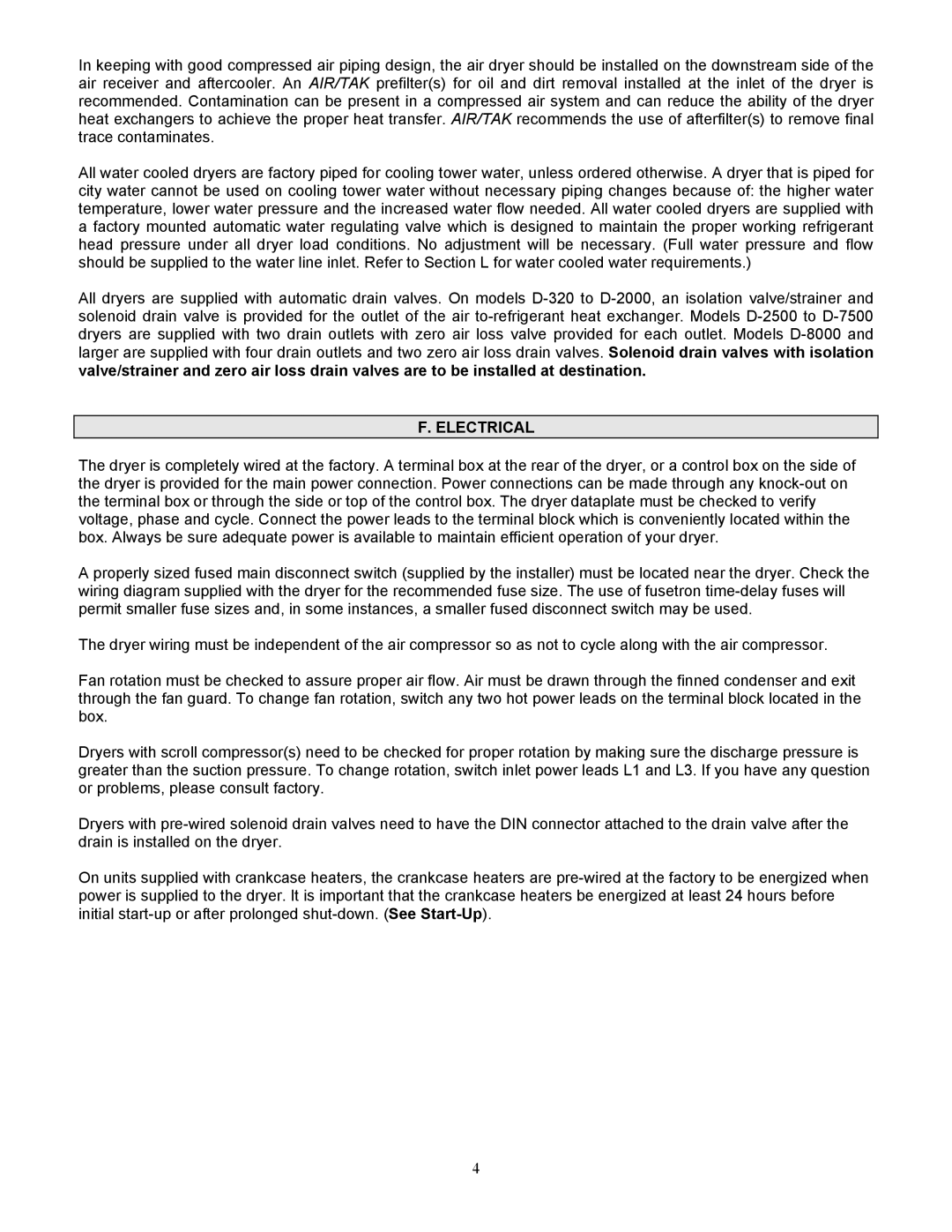In keeping with good compressed air piping design, the air dryer should be installed on the downstream side of the air receiver and aftercooler. An AIR/TAK prefilter(s) for oil and dirt removal installed at the inlet of the dryer is recommended. Contamination can be present in a compressed air system and can reduce the ability of the dryer heat exchangers to achieve the proper heat transfer. AIR/TAK recommends the use of afterfilter(s) to remove final trace contaminates.
All water cooled dryers are factory piped for cooling tower water, unless ordered otherwise. A dryer that is piped for city water cannot be used on cooling tower water without necessary piping changes because of: the higher water temperature, lower water pressure and the increased water flow needed. All water cooled dryers are supplied with a factory mounted automatic water regulating valve which is designed to maintain the proper working refrigerant head pressure under all dryer load conditions. No adjustment will be necessary. (Full water pressure and flow should be supplied to the water line inlet. Refer to Section L for water cooled water requirements.)
All dryers are supplied with automatic drain valves. On models
F. ELECTRICAL
The dryer is completely wired at the factory. A terminal box at the rear of the dryer, or a control box on the side of the dryer is provided for the main power connection. Power connections can be made through any
A properly sized fused main disconnect switch (supplied by the installer) must be located near the dryer. Check the wiring diagram supplied with the dryer for the recommended fuse size. The use of fusetron
The dryer wiring must be independent of the air compressor so as not to cycle along with the air compressor.
Fan rotation must be checked to assure proper air flow. Air must be drawn through the finned condenser and exit through the fan guard. To change fan rotation, switch any two hot power leads on the terminal block located in the box.
Dryers with scroll compressor(s) need to be checked for proper rotation by making sure the discharge pressure is greater than the suction pressure. To change rotation, switch inlet power leads L1 and L3. If you have any question or problems, please consult factory.
Dryers with
On units supplied with crankcase heaters, the crankcase heaters are
4
